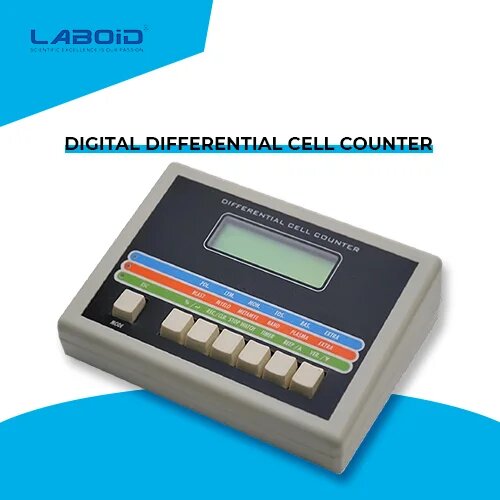Digital differential cell counters are widely used in clinical laboratories to automate the process of counting and differentiating different types of blood cells. Accurate and reproducible cell counting is important for diagnosing and monitoring various medical conditions. In this article, we will explore the typical reproducibility of digital differential cell counters including those provided by Labroid International and discuss factors that can affect the accuracy and precision of these instruments.
1. Definition of Reproducibility:
Reproducibility refers to the ability of a measurement or experiment to yield consistent results when repeated under similar conditions. In the context of digital differential cell counter, reproducibility relates to the consistency of cell counts obtained from the same sample using the same instrument or different instruments of the same model. It is an important parameter to assess the reliability and quality of cell counting results.
2. Factors Influencing Reproducibility:
Several factors can influence the reproducibility of digital differential cell counters:
a. Instrument Variability: Variations among different instruments of the same model can impact reproducibility. Factors such as manufacturing tolerances, calibration procedures, and software algorithms can contribute to differences in cell counting results.
b. Sample Preparation: Inadequate sample preparation can introduce variability in cell counting. Factors like improper mixing, clot formation, sample contamination, or air bubbles can affect the accuracy and reproducibility of results.
c. Operator Skill and Technique: The proficiency and technique of the operator can influence reproducibility. Proper training and adherence to standard operating procedures are essential to minimize variability introduced by human factors.
d. Sample Characteristics: The composition and quality of the blood sample being analyzed can affect reproducibility. Factors like sample integrity, presence of abnormal cells or particles, or variations in cell morphology can impact the accuracy of cell counting results.
3. Evaluating Reproducibility:
To assess the reproducibility of digital differential cell counters, various statistical measures can be employed:
a. Coefficient of Variation (CV): CV is a commonly used measure of relative variability. It is calculated by dividing the standard deviation by the mean and then showing the result as a percentage. A lower CV indicates higher reproducibility, as it represents less variability in cell counting results.
b. Bland-Altman Analysis: Bland-Altman analysis compares the differences between repeated measurements with their corresponding means. It provides insights into the agreement and bias between measurements, allowing for the evaluation of reproducibility.
c. Proficiency Testing: Participation in external efficiency testing programs such as those that use Micropipette can help assess the reproducibility of cell counting results. These programs involve sending samples with known cell counts to laboratories for analysis, where micropipettes are often used for precise sample handling.
4. Typical Reproducibility of Digital Differential Cell Counters:
The reproducibility of digital differential cell counters can vary depending on the instrument model, sample characteristics, and operator proficiency. Generally, these instruments exhibit good reproducibility, with low coefficients of variation ranging from 1% to 10% for different cell types.
Modern digital differential cell counters often employ advanced technologies such as image analysis and flow cytometry, enhancing the accuracy and precision of cell counting. These instruments undergo rigorous calibration and quality control procedures to ensure reliable and reproducible results.
It is important to note that reproducibility may vary across different cell types. For example, the reproducibility of counting mature red blood cells (RBCs) is typically higher than that of immature or abnormal cells, which may pose challenges in accurate identification and classification.
5. Impact of Sample Size and Cell Distribution:
The size of the sample analyzed by the cell counter can influence reproducibility. Using an adequate volume of the sample minimizes the impact of random variations and enhances reproducibility. Additionally, the distribution of cells within the sample can affect results. Uneven cell distribution or clumping may lead to variations in cell counts. Proper sample preparation techniques, including thorough mixing and dispersion of cells, can help mitigate these challenges and improve reproducibility.
Conclusion
Digital differential cell counters play an important role in clinical laboratories by automating cell counting and differentiation. Although the reproducibility of these instruments is generally good, it can be affected by factors such as instrument variability, sample preparation, operator skill, and sample characteristics. Therefore, regular quality control measures including proper training, adherence to standard operating procedures and use of Laboid International advanced technology are essential to ensure accurate and consistent cell counting results.





